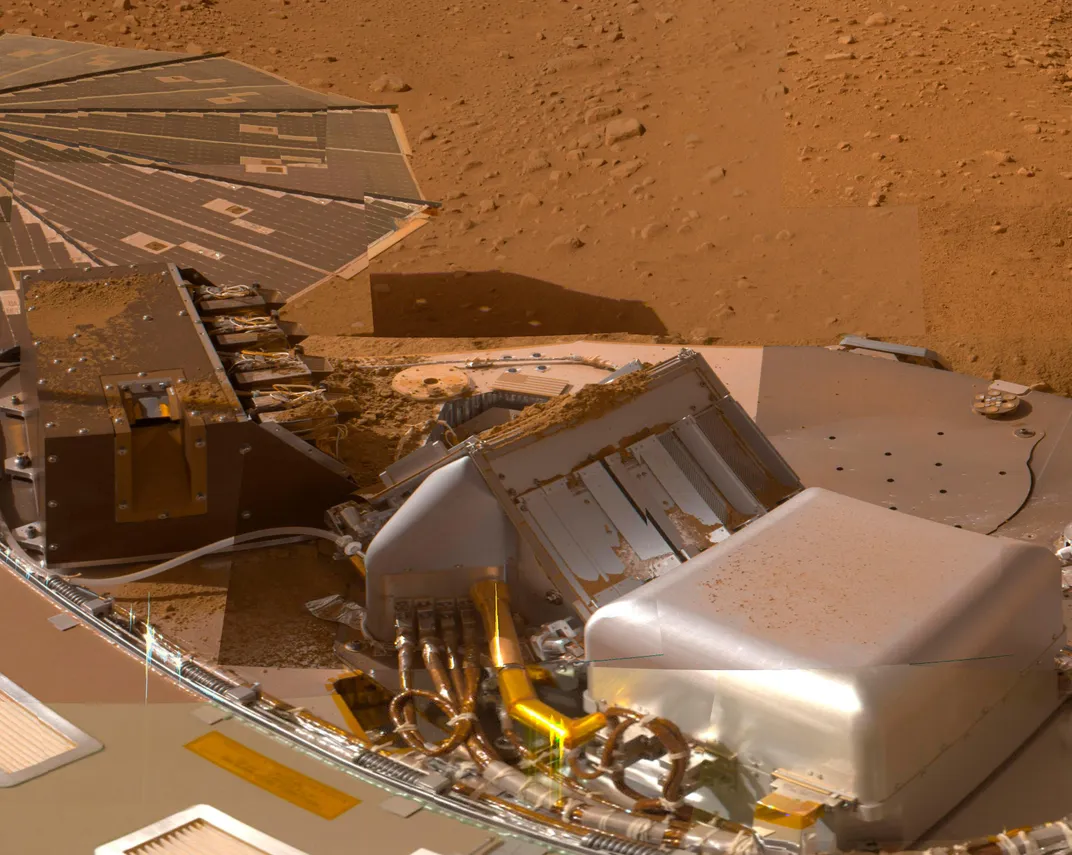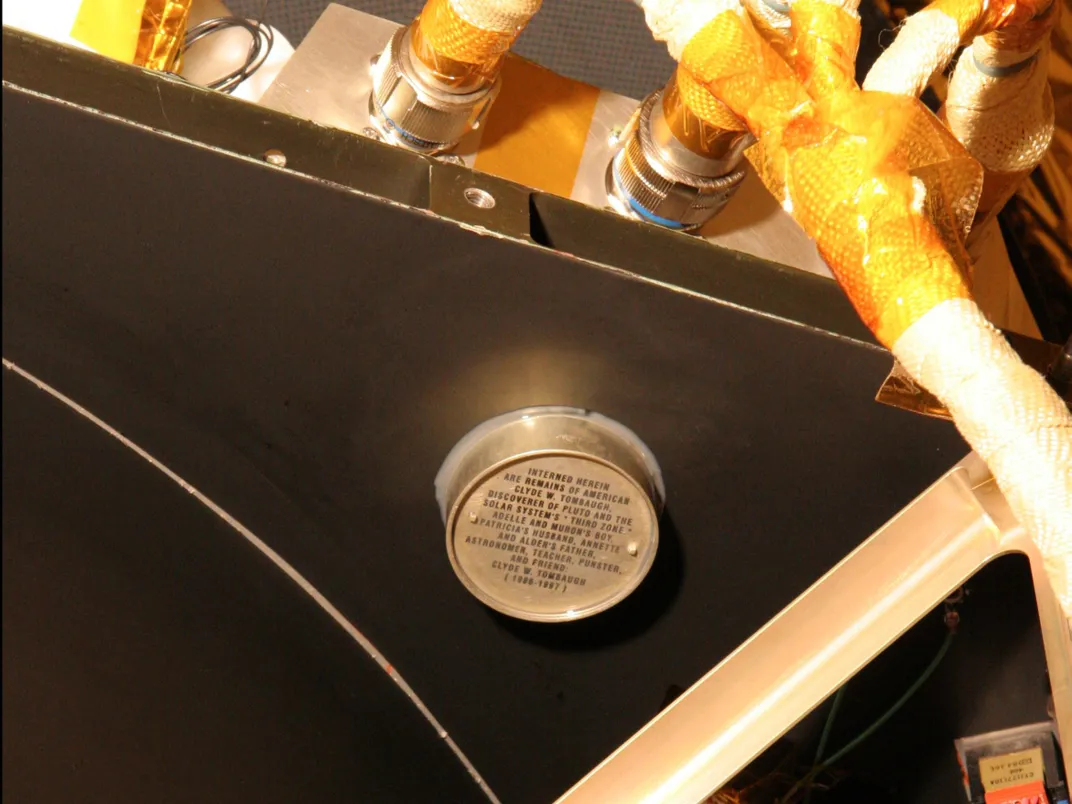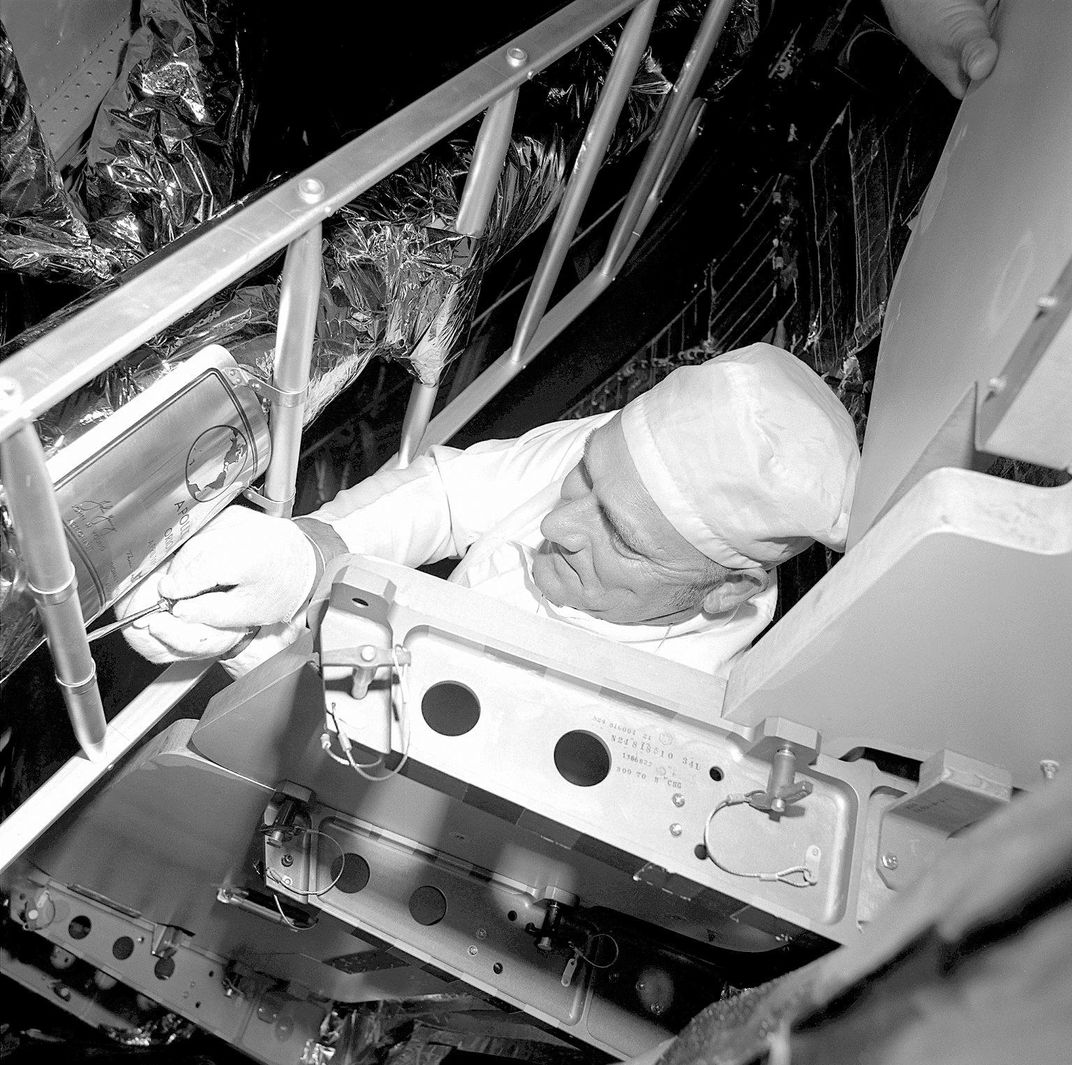“Hi! I’m from Earth!”
When sending spacecraft, it’s customary to include a note.
:focal(1040x740:1041x741)/https://tf-cmsv2-smithsonianmag-media.s3.amazonaws.com/filer/50/75/5075a692-4cf7-4282-8e6b-5ed6ef2b7624/13b_on2015_mavena_live.jpg)
When the Phoenix lander touched down on the high northern plains of Mars in 2008, it carried a heavy load. In addition to cameras, weather instruments, and a chemical laboratory for studying the Martian dirt and ice, the craft toted 80 novels and short stories about Mars, a gallery of more than 60 paintings and illustrations, several radio programs, and the names of a quarter-million people. Marvin the Martian was aboard too.
All were crammed into a mini-DVD mounted atop the desk-size lander’s deck. It was made of silica glass to last at least 500 years—long enough for 26th century astronauts to find it and decode its messages from the past. “This was a gift for the future, for the humans we hope will one day live on Mars,” says Jon Lomberg, the space artist and writer who directed the DVD project, known as Visions of Mars. “Finding these artifacts would be like us finding a piece of the Mayflower—it’ll be a part of their history.”
Phoenix isn’t the only robotic explorer to bear messages from the Old Country. Many of the solar system missions launched in the last two decades have brought along some sort of calling card. For some, it’s as basic as a list of names. Others offer greetings, works of art, or collections of small artifacts.
The Mars-orbiting MAVEN, for example, launched in 2013 to study the Martian atmosphere, carries thousands of haiku submitted by poets around the world. Kaguya, a Japanese orbiter that was intentionally crashed into the moon in 2009, bore short wishes from thousands more (astronomer Neil deGrasse Tyson wrote: “The Moon: Once a dream, Now our backyard”). And New Horizons, which skimmed past Pluto in July, carries such mementos as a small sprinkling of the ashes of Clyde Tombaugh, the Kansas farmboy-turned-astronomer who discovered Pluto in 1930, and a piece of SpaceShipOne, the first privately developed vehicle to reach space.
“It’s a way for the public to establish a connection to these missions,” says Tom Mason, outreach director for MAVEN, which entered Mars orbit last year. “In the early days, engineers at the lab would often laser-engrave their names on the spacecraft. Now the public can do the same thing—they can send something of themselves into space.”
NASA created its first high-profile messages from home in the late 1960s and early ’70s, attaching plaques to the Apollo lunar modules and to the Pioneer 10 and 11 probes, which explored Jupiter and Saturn, then swept out of the solar system. The agency upped the ante with the twin Voyagers of the late 1970s, which carried gold phonograph records with music, digitized images, and recorded greetings to any alien civilization that might happen upon the craft in the distant future.
The interplanetary message business opened to the public in a big way with the Cassini mission, launched to Saturn in 1997. The Planetary Society, which has subsequently partnered with mission teams on many of these message projects, organized a “Send your name to Saturn” campaign that asked would-be Saturnians to submit their signatures on postcards. The names—616,400 of them—were scanned and stored on a mini-DVD, which will continue to orbit Saturn until Cassini’s mission ends in 2017.
Since then, more than a dozen planetary missions have carried their own lists of names—more than 12 million in all, mainly submitted online—stored on CDs, DVDs, or microchips, or etched on wafers or ribbons of aluminum or other materials. (Many more are on Earth-orbiting spacecraft, which also have joined in the send-your-name craze.) Japan’s Hayabusa mission dropped almost 900,000 names to the surface of the asteroid Itokawa; another 650,000 were vaporized when they slammed into Comet Tempel 1 as part of NASA’s Deep Impact project. And about four million names are aboard Opportunity, the rover creeping around the Martian crater Endeavour. (Opportunity’s now-dead twin, Spirit, carries a duplicate list.)
These messages-from-home projects usually begin with either the mission team or a suggestion from a designated “outreach” partner. “Each one is unique,” says Bruce Betts, director of science and technology for The Planetary Society. “Sometimes the mission team wants more involvement, sometimes it doesn’t. You have to propose to the principal investigators and the space agencies, and get [NASA] headquarters approval. There are lots of hoops to jump through.”
“When we did the Visions of Mars DVD, we had to comply with a lot of rules,” notes Lomberg, who has been at this game since he helped put together the Voyager record 40 years ago. “You don’t want something that will melt or shatter or in any way interfere with the science instruments. And we tested to make sure that it would last for centuries. We even put it in a nuclear reactor to see how it would be affected by radiation.”
If the DVD survives the rigors of the Martian environment long enough for future explorers to find it—and if they can decipher the centuries-old technology—they’ll find the most extensive collection of words and pictures yet launched to another world. The disk, which evolved from a similar project for Russia’s failed Mars 96 mission, includes Ray Bradbury’s Martian Chronicles, Edgar Rice Burroughs’ A Princess of Mars, and H.G. Wells’ War of the Worlds plus Orson Welles’ radio adaptation of the novel, as well as paintings by legendary space artists Chesley Bonestell and Bob McCall.
“It’s a collection of science fiction that inspired people to build a spacecraft to go to Mars,” says Lomberg. “It’s not necessarily the most scientifically accurate look at Mars, but it’s sci-fi that got people interested in Mars in the first place. We even included Marvin the Martian, because the first notion of Mars that a lot of people got came from those cartoons.”
While the Phoenix lander may contain the most words, the New Horizons mission to Pluto and beyond carries the most stuff. Its payload of artifacts includes the usual list of names (434,738 on a CD), two American quarters (featuring Maryland, where the mission’s control center is located, and Florida, where New Horizons was launched), and a 1991 postage stamp with a painting of Pluto and the caption “Not Yet Explored.” One thing New Horizons does not include is a Pioneer- or Voyager-style message to the rest of the galaxy. “It was a very political activity for Voyager,” says Alan Stern, the New Horizons principal investigator. “It was so complex, and we were just trying to keep our eye on the ball, that we decided not to do it.”
Lomberg still hopes to change that, even with the spacecraft three billion miles from Earth and moving away at 83,000 mph. He has proposed transmitting a Voyager-like library of images and greetings for storage in the craft’s computer memory. He talked to Stern, who supported the idea, and received initial encouragement from NASA—but no money. So he assembled an advisory committee, started an online crowd-funding campaign, and started thinking about how to create a note from Earth in the Internet age. “I thought: Why not crowd-source the message,” Lomberg says. “We can tell people that we want to send a picture of a family or a forest or a building, have them submit pictures, then the public can vote on them. That would be a better self-portrait of Earth.”
Such a project is likely to take years to plan, and the message will take hours to reach New Horizons out in the far reaches of the solar system. By then, scientists and engineers may be planning new missions of exploration, and the public will no doubt come up with new kinds of messages to the universe, something nobody has sent before. “Never underestimate human creativity,” says Lomberg.


